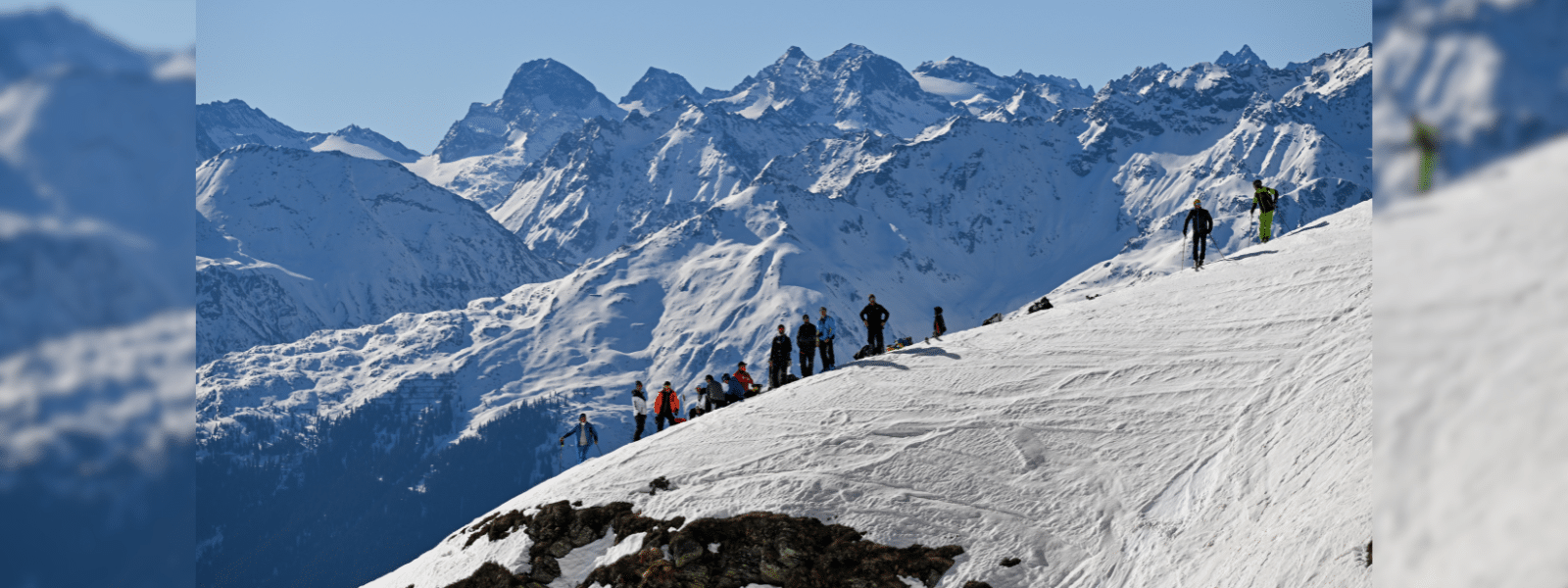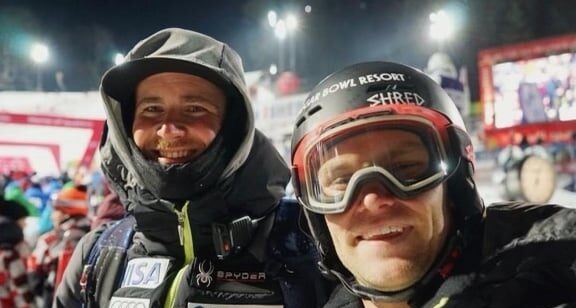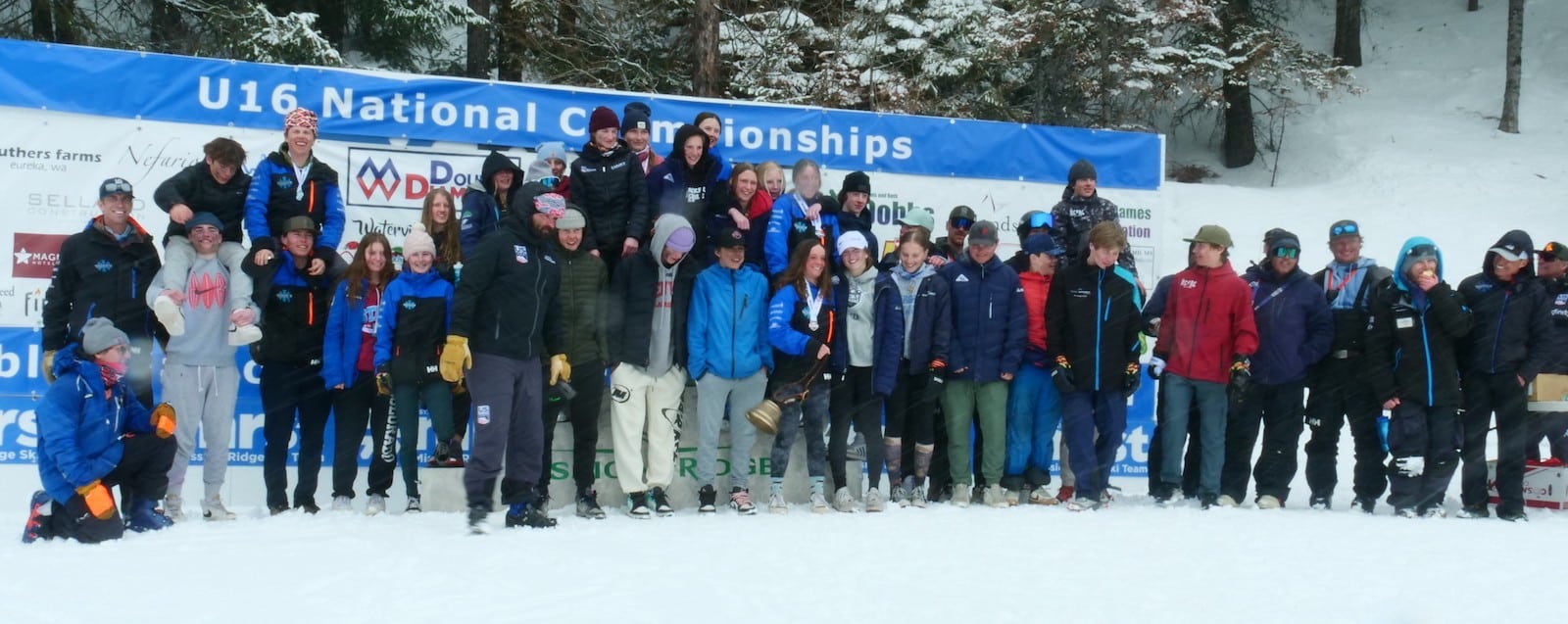From NorAms to World Cup and Back Again
The North American Cup, also known as the NorAm circuit, is a race series that’s meant to act as a stepping stone for young American and Canadian FIS racers who have their sights set on the World Cup.
Developing athletes begin at the bottom of the start list at NorAms and must work their way into the top of the field, then get a few results under their belt before rising to the next tier, the Europa Cup. A top-10 finish at the Europa Cup level indicates an athlete may be ready to work toward the next stage – a coveted World Cup start. A top-30 at the World Cup marks some sort of belonging on the circuit, and then hopefully, an athlete performs well enough to break into the top 30 and consistently finish. But first, developing athletes must succeed in NorAms, and success at the NorAm level, some say, does not signify potential success at the World Cup level.
Historically, Canadians and Americans that jump across the pond to compete in Europa Cups do not have strong showings in their first few seasons; it doesn’t come as easy as it did in NorAms and this effect is often more severe at the World Cup level. Making the transition to the sport’s highest level of competition takes time given the extreme differences between the various levels of the circuits.
U.S. Ski Team newbie, Luke Winters, has been competing in NorAms for four seasons and made his World Cup debut in Levi, Finland in November of 2018. Throughout the course of the season, Winters and his teammate, River Radamus, have bounced back and forth between NorAms and the World Cup as they attempt to establish themselves on the World Cup circuit. Having experienced and skied both the “beginners” circuit and the “end game” circuit, Winters and his support team of coaches and technicians are keen on what NorAms do right for developing athletes, and where they fall short.

Luke Winters (2nd), Simon Fournier (1st), and Garett Driller (3rd) at the Camp Fortune, Canada slalom in January 2019. Courtesy of Alpine Canada.
NorAms simulate the process needed to break into the top of the field, they say. An athlete’s first start at a NorAm is at the back of the pack, and it takes multiple starts and strong finishes to build up momentum and lower points enough to break through and start having chances at podiums.
“Coming in, starting back with bib 120 and trying to move my way up, and then finally getting into the seed – it took me a couple of years. It took me a little longer than I would say some of the other guys to get up into the seed and start performing at NorAms,” said Winters. “I’ve just always said, you gotta come, you gotta trust what you’re doing and have patience and, you know, my experience with that is similar to what I’m learning on the World Cup circuit. You gotta just trust what you’re doing and know that the skiing is there and the results will come.”
Where the NorAm experience falls short, is in mimicking a similar field, the degree of difficulty in a course, and in the hard surface conditions, that athletes will see on the Europa Cup and World Cup circuits.
“The NorAm circuit has a fairly thin field which makes it a quite natural step up from FIS races. But the level makes the direct step over into World Cup too big in many cases,” says the U.S. Ski Team’s Europa Cup Development Coach, Martin Andersen. “Conditions are also quite different and will in many cases favor skills and techniques that do not compare to what they will have to deal with on the World Cup tour. Competition is in some cases too limited and it can give athletes false expectations going over to compete at Europa Cups or World Cups.”
Andersen, the current coach of development athletes Luke Winters and River Radamus, was brought onto the U.S. Ski Team’s staff in May of 2018 in hopes he could help athletes bridge the gap between NorAms and the World Cup. Given his 25 years of coaching experience in Norway, the United States, and Finland, in addition to his experience working with greats like Bode Miller, Daron Rahlves, and Aksel Lund Svindal, Ski & Snowboard saw his breadth of knowledge as a way to help rebuild a failing technical men’s program.
“It’s important for the US that the quality and level of racing gets as close as possible to the next two levels. It is also very important that future athletes get a realistic approach to the different levels of racing,” said Andersen. “We will be running around in circles if the main goal is to perform at the NorAms and come up with all kinds of different arguments for why we have a hard time performing in Europe.”
Current chair of the NorAm committee and U.S. Ski & Snowboard Development Director, Chip Knight, acknowledges these gaps, particularly in the Canadian series since they do not deploy the same course preparation resources as the State’s do in order to prepare for NorAms. That being said, NorAm’s give American and Candian athletes an opportunity that comes more rarely at the Europa Cup level, a chance to actually start on the World Cup.
“The mission of the NorAm’s is to create the highest level of ski racing competition in North America and to provide a stepping stone for athletes to move to the Europa Cup and the World Cup. In light of that mission, we do everything we can to achieve that. There are challenges involved in the process but we’re trying to raise the level to the highest level possible so that athletes can make that jump,” said Knight. “We fully recognize at U.S. Ski & Snowboard that there is a gap there, a gap in density, a gap in caliber in some of the hills we compete on at the NorAm level, the duration at certain venues is nowhere near World Cup in some cases. But the NorAm Cup is a huge opportunity for our athletes, both Americans and Canadians to score minimum FIS point results and to get a World Cup starting spot.”

Luke Winters (USA) competes in the giant slalom held in Val d’Isere in December. Photo: GEPA pictures/ Mathias Mandl
As the end of the 2018/19 season approaches, Winter’s now has six World Cup starts under his belt. In each of those races, he has not finished his first run or been able to qualify for a second run. His only Europa Cup start in Kronplatz in 2019 also resulted in a DNF. Yet, on the NorAm circuit, Winters is a top contender for the podium, particularly in slalom. On February 5th, Winters finished first in a NorAm slalom at Sun Valley Resort in Idaho; a hill that is considered one of the more challenging and well-prepared on the circuit.
Winter’s knows he struggles on steep courses with icy conditions because he just doesn’t get that kind of exposure on the NorAm circuit. Flats and mediocre sections are his sweet spot on the World Cup and a lot of that has to do with the kind of terrain and courses he’s become accustomed to seeing on the NorAm circuit, as well as in training in the United States.
“The biggest downfall with NorAms right now is hill preparation. We’ve had hills the past couple of years that are flat, really flat. And the snow is not hard, pretty soft actually, and we’re not skiing on ice, we’re not skiing on the same snow,” said Winters. “There’s a lot of people who can perform in those conditions in NorAms, but when they make it to the World Cup and the Europa Cup circuits, the snow and the hill is so much different. So if there’s one thing that NorAms need to change, it’s hill preparation and snow preparation. And also harder hills.”
Athletes racing at the World Cup level are racing on the best hills in the world at a level that cannot be equally matched, in all aspects, at the NorAm level or the Europa Cup level. In Knight’s opinion, that doesn’t mean there isn’t value in skiing terrain and pitches that don’t “match up”.
“Luke’s point is well taken, we’re always trying to get on the most challenging hills we can,” he says “But there’s also a blend of hills the athletes need to ski on. They race World Cup on Val d’Isere and Alta Badia and Adelboden, but they also race on Beaver Creek, which has some terrain but it’s generally pretty flat. So there’s a range of hills they need to race on and get exposed to but there are some good hills at the NorAm level. The other side is not all Europa Cup hills are all that steep, some of those are flat too. So you gotta learn to ski it all.”
In addition, finding pristine training venues that offer the steep, icy slopes that World Cup athlete’s need to train on is a challenge in and of itself.
“Some of the challenges we face as we travel around the world is finding not just NorAm venues, but also training venues that are going to prepare athletes in that way,” says Knight. “It’s a widespread challenge that we certainly recognize at the NorAm level but we try and do the best we can.”
Being one of a handful of athletes that are jumping back and forth between NorAms and the World Cup is tough because there is an expectation that athletes should be performing at all levels. Not only are they expected to win NorAms, they are also expected to be top five in the Europa Cup and perform at the World Cup level while traveling back and forth from Europe into various conditions and race formats. On the women’s side, Nina O’Brien, Tricia Mangan, and AJ Hurt have been making similar jumps to those made by Winters and Radamus. All three women have excelled in NorAms. O’Brien is the only one who has been capable of making the World Championship team out of the five.

Last season in Davos, Switzerland both Winters and Radamus podiumed in the FIS Alpine Junior World Ski Championships in the super-G, alongside Switzerland’s Marcus Odermatt. Since they have both refocused on technical development and performing in slalom and giant slalom events. Photo: GEPA pictures/ Oliver Lerch
“After the first excitement has tapered away and given room for realistic hopes and views of what it takes to succeed at World Cup, guys get a different attitude in terms of going back to NorAm’s in terms of expectations and demands of the races there. They expect NorAm’s to be a performance tour but more often than not they come back a little bit disappointed,” says Andersen. “To get to the next level, which is performing top 10 at Europa Cups and top 30 at World Cups, it’s about adapting to the difference in conditions and not think that a good NorAm result is the same as being ready to perform at EC or WC. Athletes learn a lot about what it takes in terms of hard work and professionalism. At the World Cup you’ll find 60-70 guys in the tech races with lots of talent who also work very hard every day.”
There is something to be said about the current state of development in the United States and the challenges faced here compared to European counterparts. Bridging the divide means ramping up the intensity to make the hills and conditions in the North American series more difficult, so developing athletes are more prepared to perform at the Europa Cup and World Cup level when given the opportunity.
Knight says that in order to close the gaps seen on the NorAm level, the committee is working towards goals going into the next few seasons to raise the level of the NorAm races. Trying to have more races on World Cup hills, utilizing preparation at World Cup venues (such as Lake Louise and Killington) when and if possible, calendaring events in a way that provides an easier opportunity for European’s to hop across the pond and compete in order to create more density in the field, and incorporation of parallel events to help prepare NorAm athlete’s for success in those events moving forward.
But that’s not to say the current strategy of keeping FIS points low to earn a World Cup start has not worked. Knight points to athletes such as Brian McLaughlin, an independent racer that had been fully integrated into the US Men’s Technical team prior to being named to the World Championship team in February, as a perfect example of what the NorAm’s can be. Earning minimum FIS points at the NorAm level and at the collegiate level provided him with the opportunity to earn a start on the World Cup, and then further prove he belonged on the circuit by finishing in the top 20 multiple times in the 2018/19 season. Athlete’s in addition to Winter’s and McLaughlin who have used the NorAm’s to their advantage include Nina O’Brien, AJ Hurt, and two-time 2019 World Juniors gold medalist River Radamus.
Going into the 2019/20 season, the FIS point system is changing in such a way that makes NorAm’s more valuable, in the sense that it becomes more advantageous to do well at a NorAm than at a FIS race if an athlete is looking for a World Cup starting spot. Knight expects that because of this, more Europeans will attempt to cherrypick off of the NorAm series, and in turn, create a deeper field of competition.
The NorAm Cup circuit has its pros, and it has its cons. Despite its imperfections, the NorAm Cup is the best thing the United States and Canadian federations have to prepare their developing athletes for the “big show” across the pond. As the NorAm committee works towards closing the gaps in terms of the “level” of competition, athlete’s like Winters have the opportunity to establish a foundation that allows them to start at the World Cup level and grow from there.





















